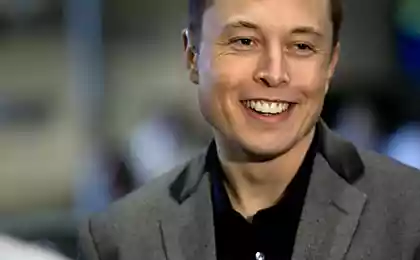441
Ion cars
The company Nanoflowcell several have exhibited at the Geneva motor show innovative prototypes of electric cars. The headquarters of the company is located in Vaduz, capital of Liechtenstein, but the lion's lead in R & d departments in Switzerland and Germany. Her most recent development is the electric car that will not need charging. Model under the symbol Nanoflowcell Quant 48VOLT was presented at the Geneva motor show.

The electric car is not required to charge from the wall outlet. Instead, the car will need to fill as if it used the internal combustion engine on compressed natural gas.

Nanoflowcell Quant 48VOLT equipped with so-called "flow batteries", in which electricity is not stored in the traditional way and is made as appropriate from the interaction of positively and negatively charged ionic liquids (water with dissolved salts of various metals). To generate the solutions were pumped through the fuel cell pumps. In working order they are stored separately. As a result, the car does not require lengthy recharging and large capacity battery.
The technology was developed and patented by NASA in 1976. NASA planned to use the flow batteries for energy storage during space flights.

According to estimates Nanoflowcell, a kilogram of the ionic liquid is capable of storing 20 times more energy than a kilogram of lead-acid batteries and five times more than a kilogram of lithium-ion batteries. But a kilogram of gasoline produces 20 times more energy than the ionic liquid Nanoflowcell. On the other hand, the energy efficiency of electric motors is higher than that of internal combustion engines.
In the car, Nanoflowcell Quant 48VOLT electric energy supplied by 4 electric motors driving one wheel. Engines are hidden under the cabin floor in the center of the car to optimize weight distribution. Excess energy is stored in the auxiliary battery and later can be spent.
The claimed speed of 300 kilometers per hour, the distance between "fill-UPS" – 1000 km. published
P. S. And remember, only by changing their consumption — together we change the world! ©
Source: green-city.su/ionnoe-avto/

The electric car is not required to charge from the wall outlet. Instead, the car will need to fill as if it used the internal combustion engine on compressed natural gas.

Nanoflowcell Quant 48VOLT equipped with so-called "flow batteries", in which electricity is not stored in the traditional way and is made as appropriate from the interaction of positively and negatively charged ionic liquids (water with dissolved salts of various metals). To generate the solutions were pumped through the fuel cell pumps. In working order they are stored separately. As a result, the car does not require lengthy recharging and large capacity battery.
The technology was developed and patented by NASA in 1976. NASA planned to use the flow batteries for energy storage during space flights.

According to estimates Nanoflowcell, a kilogram of the ionic liquid is capable of storing 20 times more energy than a kilogram of lead-acid batteries and five times more than a kilogram of lithium-ion batteries. But a kilogram of gasoline produces 20 times more energy than the ionic liquid Nanoflowcell. On the other hand, the energy efficiency of electric motors is higher than that of internal combustion engines.
In the car, Nanoflowcell Quant 48VOLT electric energy supplied by 4 electric motors driving one wheel. Engines are hidden under the cabin floor in the center of the car to optimize weight distribution. Excess energy is stored in the auxiliary battery and later can be spent.
The claimed speed of 300 kilometers per hour, the distance between "fill-UPS" – 1000 km. published
P. S. And remember, only by changing their consumption — together we change the world! ©
Source: green-city.su/ionnoe-avto/
German scientists have created the world's largest "artificial sun"
Experimentally confirmed the birth of a new family of substances or Square daughter of graphene






















